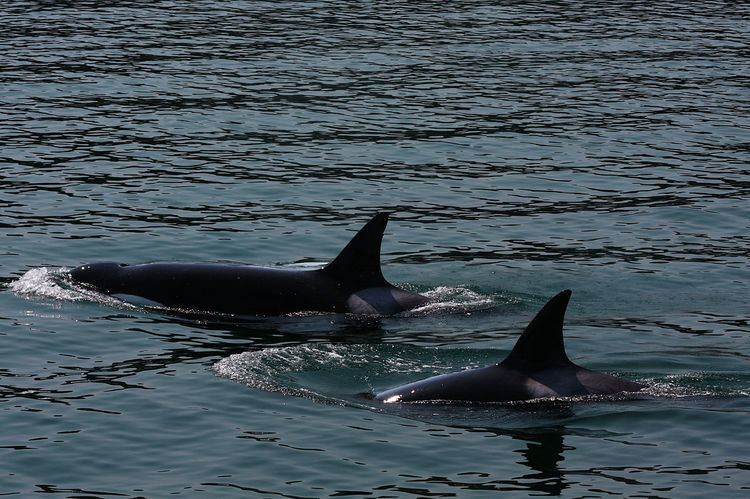 | ||
A pack hunter or social predator is a predator belonging to the animal kingdom, which has evolved to hunt its prey by working together with other members of its species. Normally animals hunting in this way are closely related, and with the exceptions of humans and chimpanzees where only males normally hunt, all individuals in a family group will contribute to hunting. The most commonly known pack hunter is the gray wolf, the closest wild relative of all breeds of domesticated dog. Humans and their closest-living relatives chimpanzees are themselves pack hunters even without aid of other species. Other pack hunting mammals include dolphins, lions, dwarf and banded mongooses and spotted hyenas. A number of avian social predators exist, including the Harris's hawk, butcherbirds, three of four kookaburra species and many helmetshrikes. There are a few cold-blooded pack hunters including simple arthropods such as army ants, the yellow saddle goatfish and occasionally crocodiles.
There is a possibility that some non-avian theropod dinosaurs displayed pack behavior as well.
A social animal that always hunts singly such as the domestic cat is not a pack hunter.
Pack hunting is typically associated with cooperative breeding and its concentration in the Afrotropical Region is a reflection of this. Most pack hunters are found in the southern African savannas, with a notable absence in tropical rainforests and with the exception of the wolf and coyote, higher latitudes. It is thought that either on the ancient and poor soils of the southern African savanna it is not possible for individual predators to find adequate food, or that the environment’s inherent unpredictability due to ENSO or IOD events means that in very bad conditions it will not be possible to raise the young necessary to prevent declining populations from adult mortality. It is also argued that Africa’s very large area of continuous flat and open country, which was even more extensive while rainforest contracted during glacial periods of the Quaternary, may have helped encourage pack hunting to become much more common than on any other continent.
A shared pack hunting history is thought to be the main conduit through which humans have been able to form a mutual relationship with dogs (that is, domestication), as both species are highly social and inter-dependent. Humans easily take over the dominance hierarchy of dogs as subordinates instinctively follow the “alpha” individual and dogs are accustomed to living very close together
When wolves hunt a Moose or Elk, it sometimes takes to deep water to avoid the pack. A wolf response to this behavior is that the pack rests with one or two wolves annoying the prey until it gets fatigued. The organization of wolf packs includes Alpha wolves which eat first from a kill and which produce most wolf pups.
